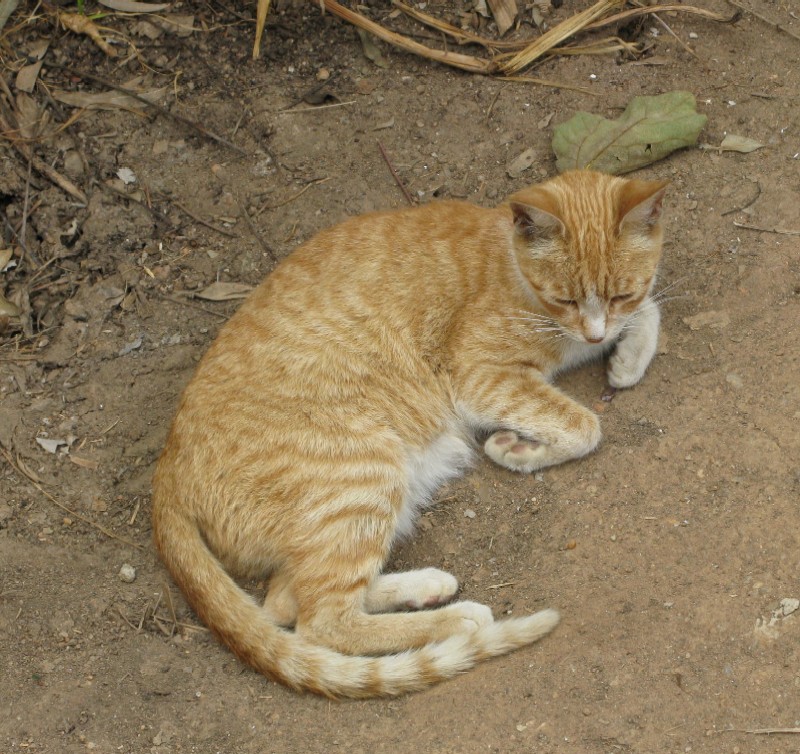Rwanda
July, 2009
Scenery - Rwanda is the Land of 1000 Hills and an absolutely most beautiful country!
Cows - I was part of the team working with farmers on animal husbandry
Learning Spaces - We were there to teach but I feel we learned as much as we taught
Genocide Memorials - We always say, "Never forget." Will we forget again the next time?
Churches and Music - This country lives and sings it's faith
People - Wonderful people we met
We visited 40 locations, discussing cow husbandry. Many people have received goats and/or cows. But the animals did not come with operating manuals. We discussed feed, water, housing, parasite control, breeding, and artificial insemination. The farmers want to learn and they are so bright. They work and share with their neighbors. They develop and join associations to share resources and ideas. We were there to support the farmers and I think we learned as much from them as they did from us.
Here are some typical Traditional cows (Ankole). They have distinctive bumps by their shoulders, by their chest and on the ventral abdomen (can sometimes be confused for something else). Most are a beautiful chestnut brown.
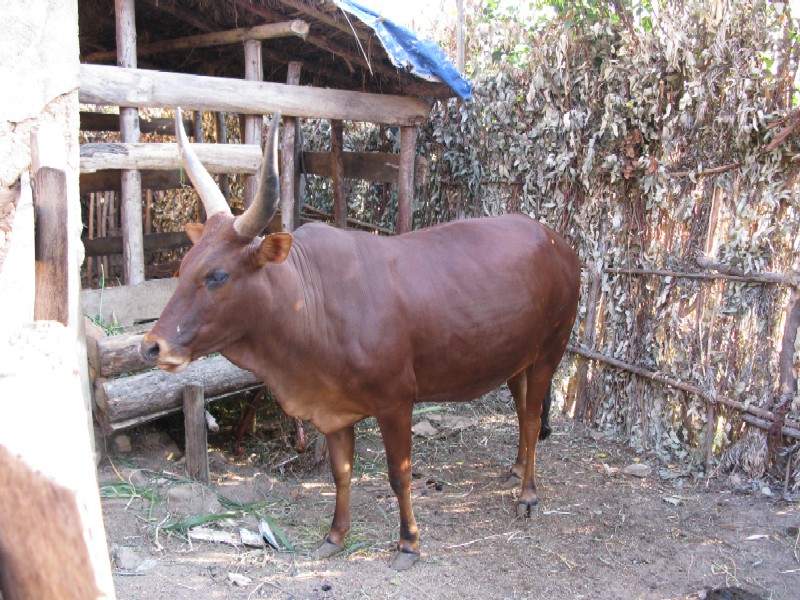
Some are black.
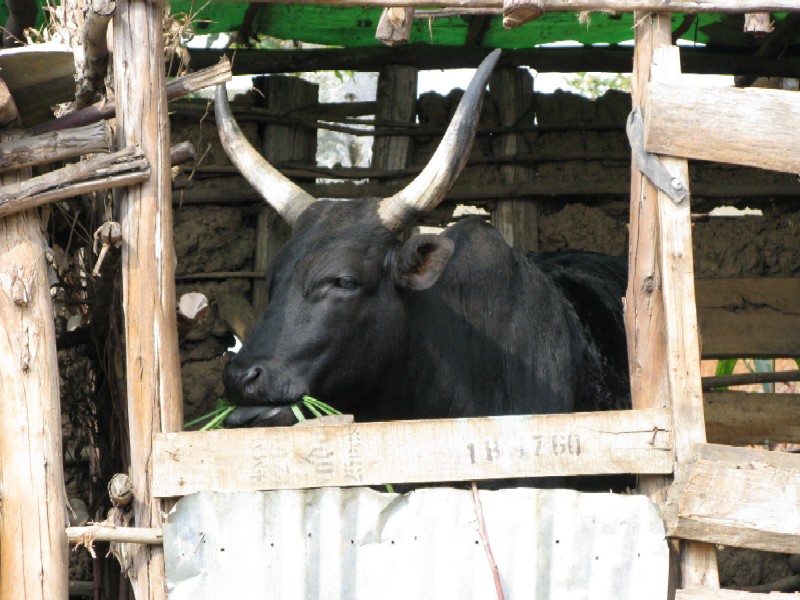
Some are even speckled.
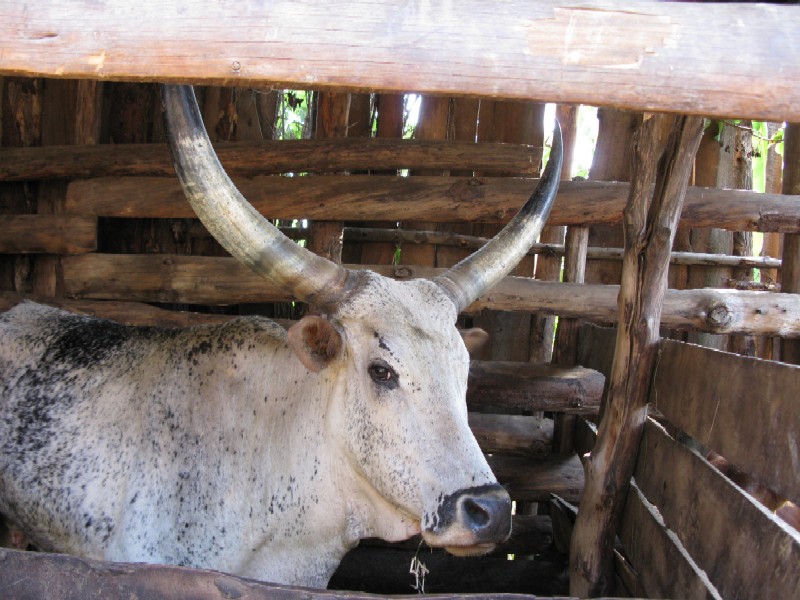
They are almost all gentle.
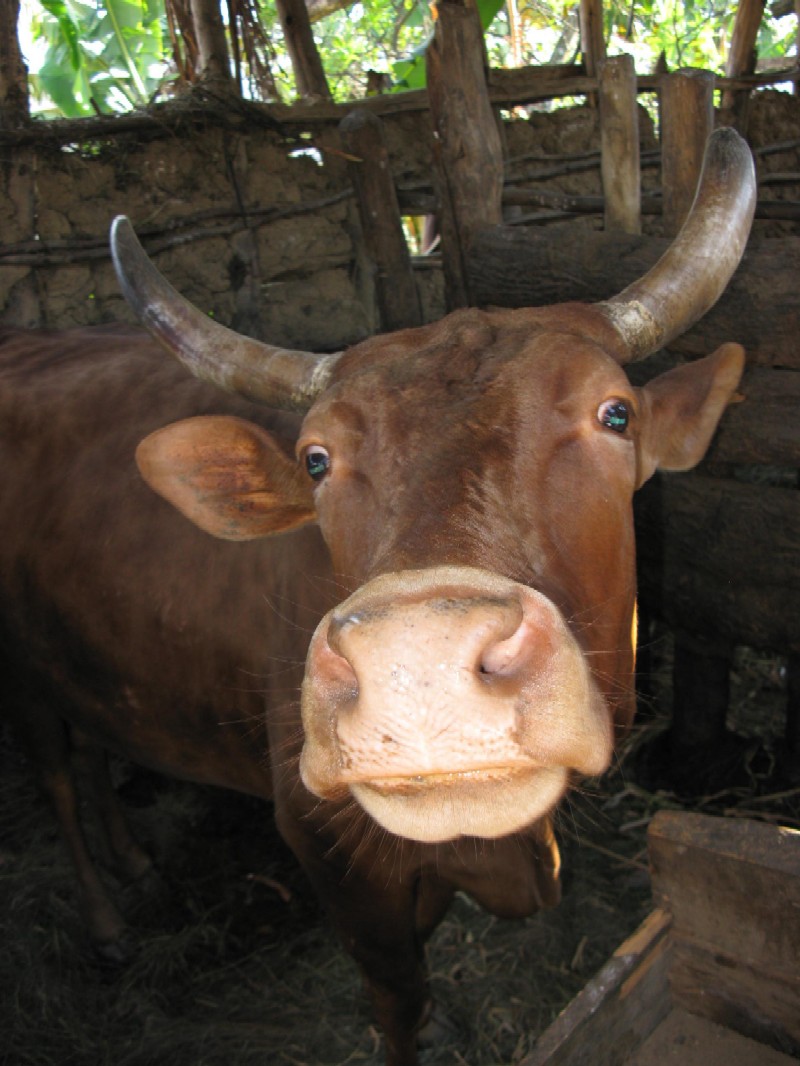
Esperance treats her cow and calf like pets. She took down a banana tree to put up her stall.
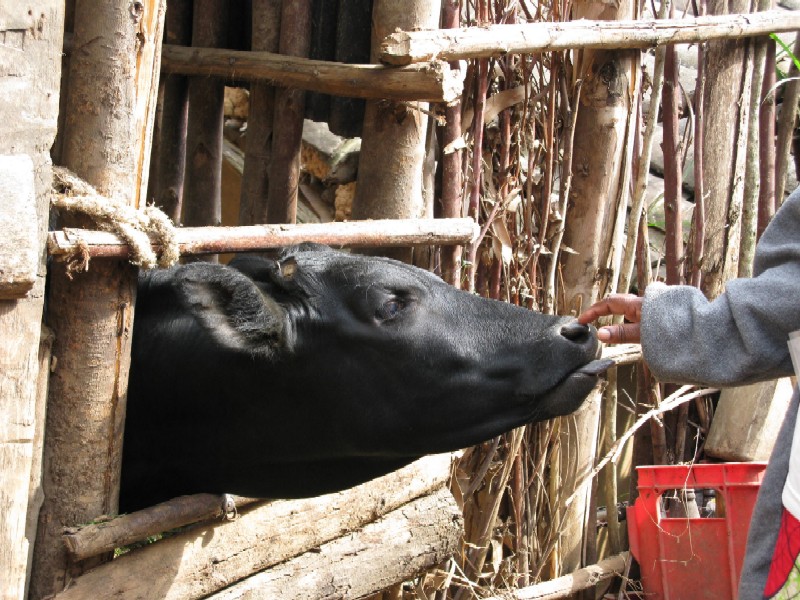
It's incredible how the traditional cows can maneuver their horns around so well. Unlike most other breeds of cow, the horns are important for cooling and are richly vascularized.
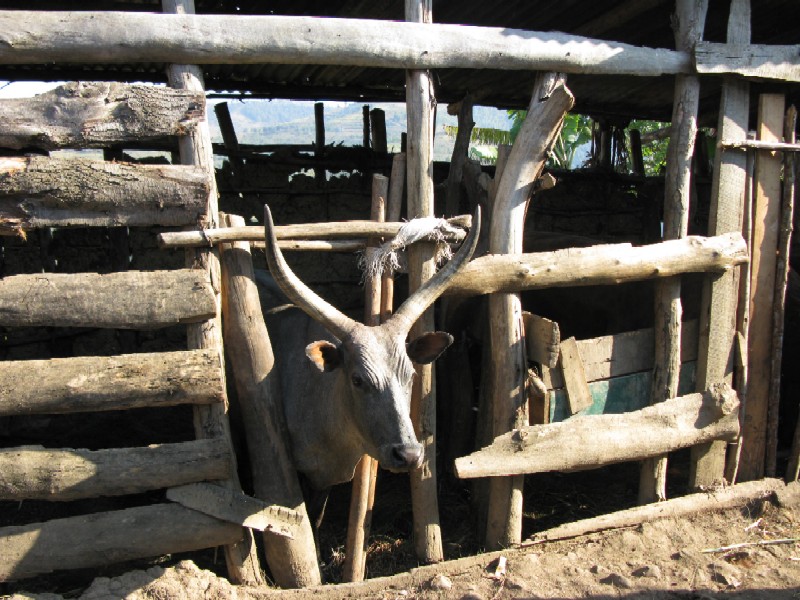
Many people consider traditional cows to be "museum" cows. They want to improve genetics and replace traditional breeds with European breeds. Unfortunately there are few pure bred cows; most are mixed with traditional breeds.
Here is Fiona's cow, a pure bred Friesian. She produces a great deal of milk (17 L, close to 10 times the production of most traditional cows and more than double the mixed cows). She practices good, modern husbandry and it shows.
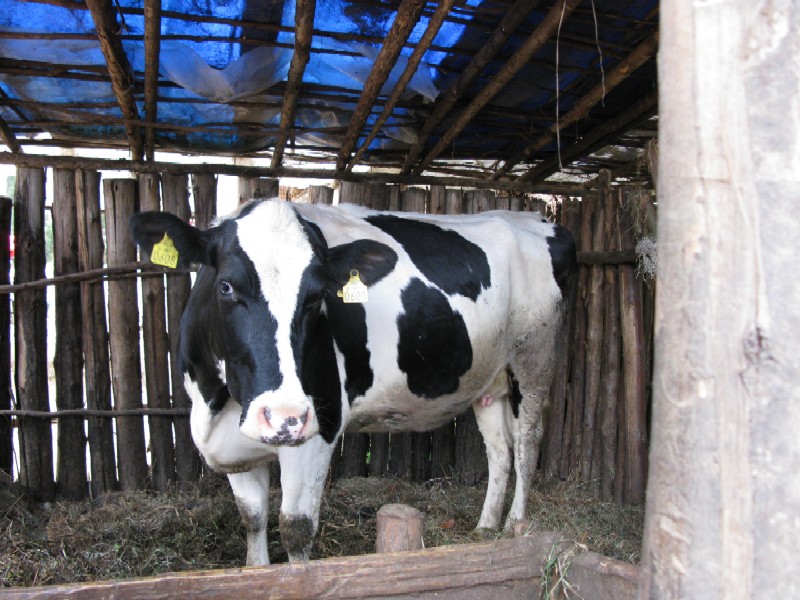
The APAP bull, bought with funds from the Udder Project, is doing a very good job getting cows pregnant in his first year of service, but he's only 65% Friesian.
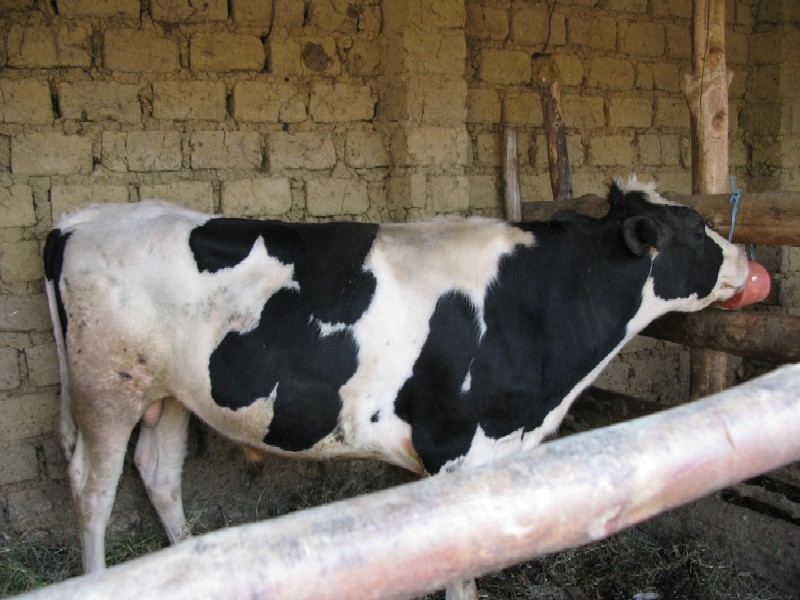
The APAP bull is also very friendly. And he is servicing approximately a cow a day. The first calf is due in 3 months!
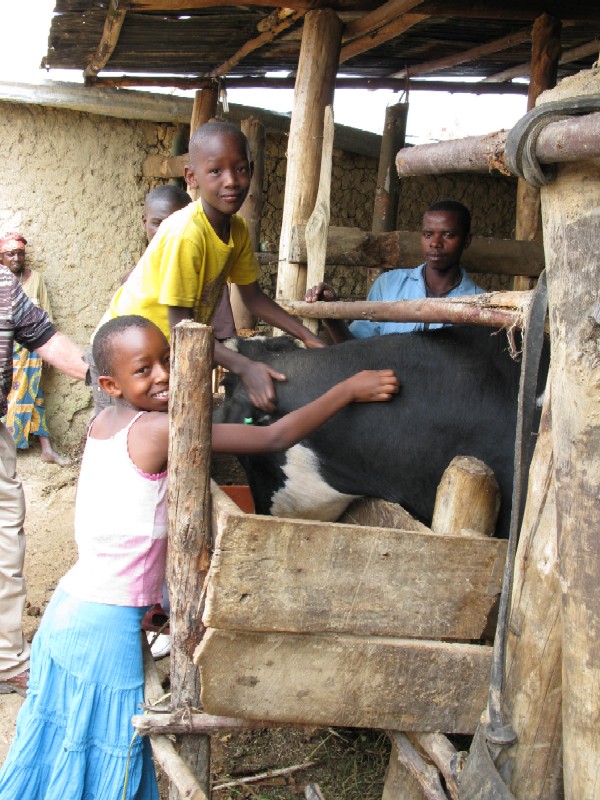
Housing was very interesting. Most people have built small stalls in the yard for their cows.
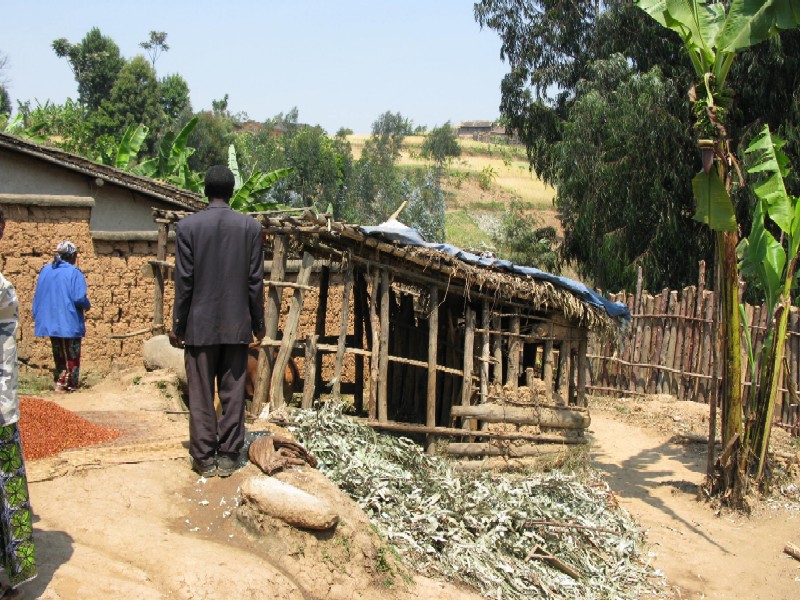
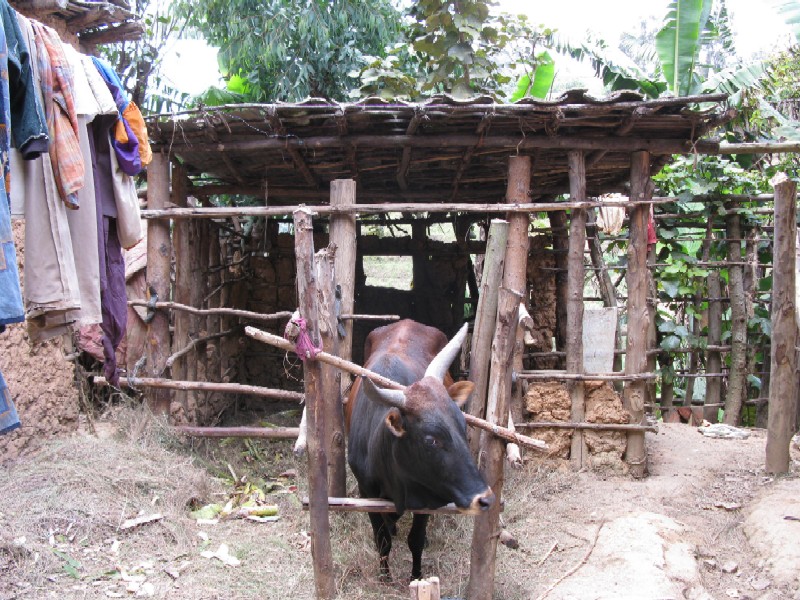
This is a fabulous design. It was provided to the Food Security beneficiaries and has a little outdoor pen as well as a storage area and two stalls for alternating.
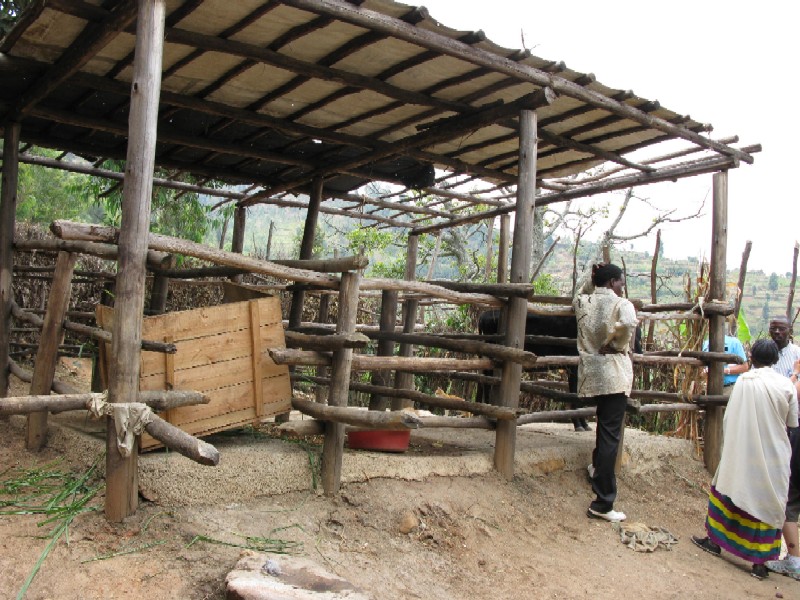
Some people didn't have outside accommodations and kept the cow (or calf) in a room in the house.
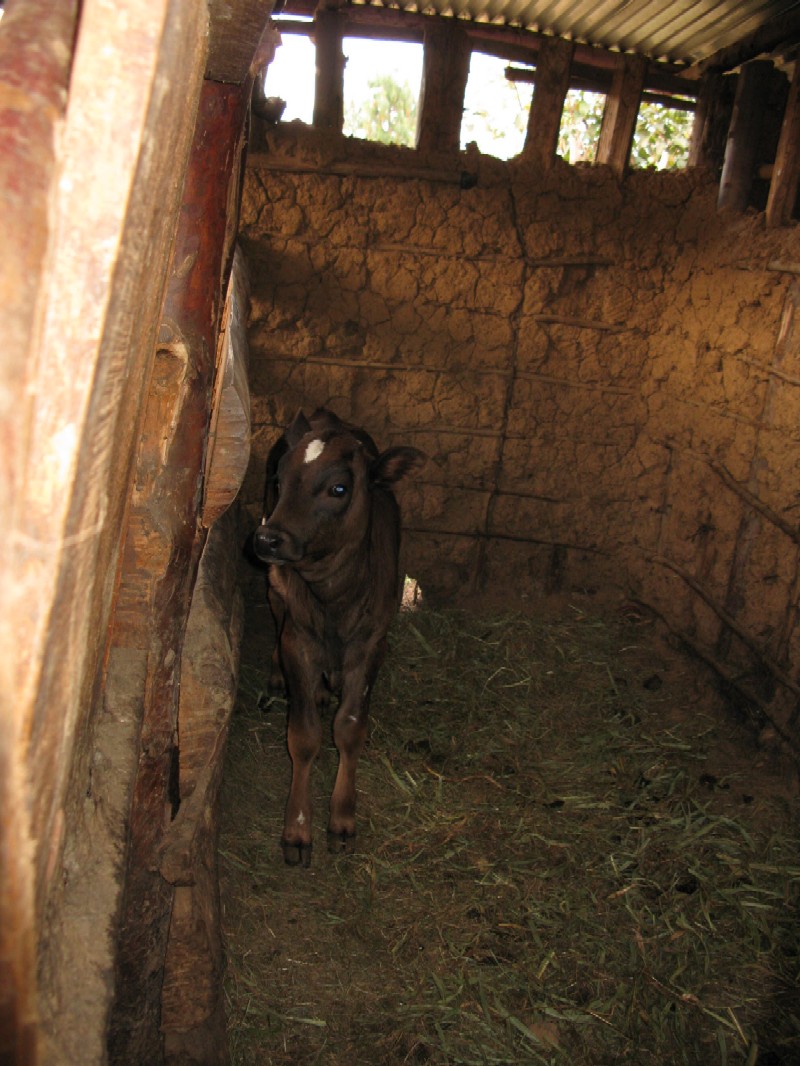
Some of the practices were quite interesting. Many people break up salt or just pour table salt into the water.

Here is Pastor Juliette watering one of her cows. She was one of the few who provided clean water with no added salt.
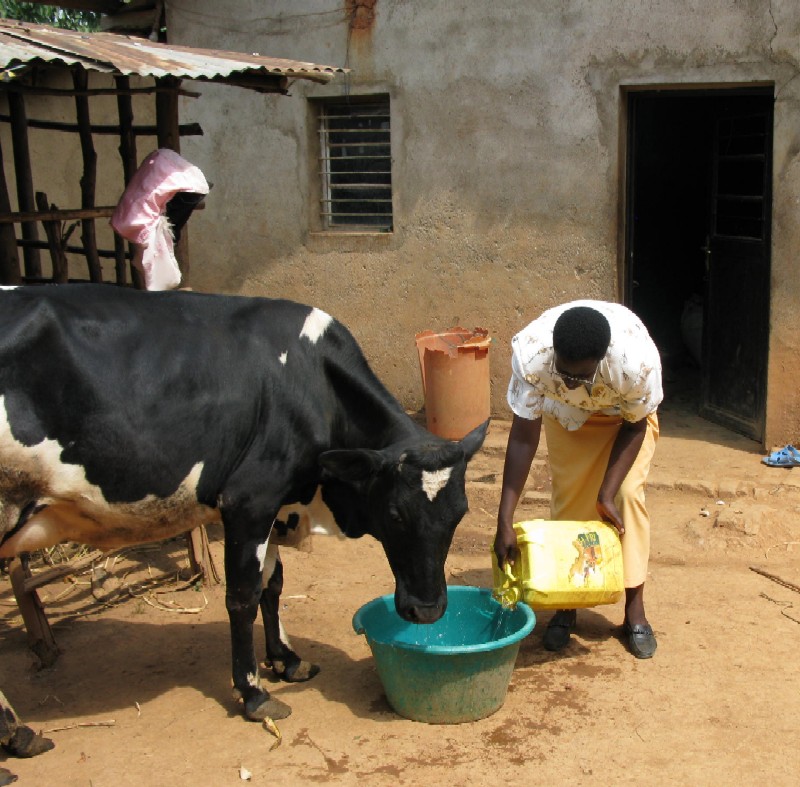
After drinking, one of the cows then decided to have some fun chasing the children into the house.
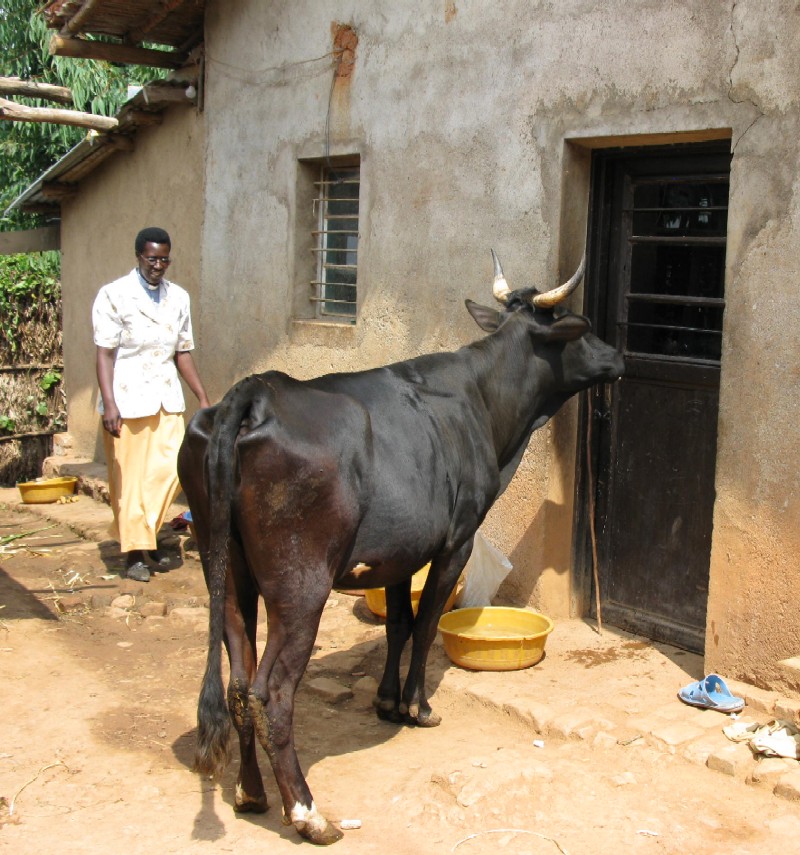
Here Evereste is making a mash from this tree.
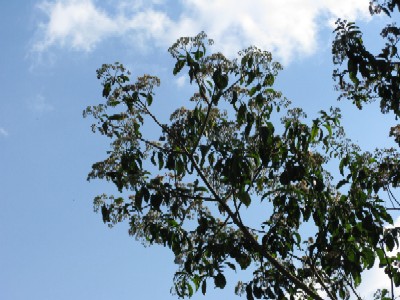
First he chops the leaves up in a huge mortar.
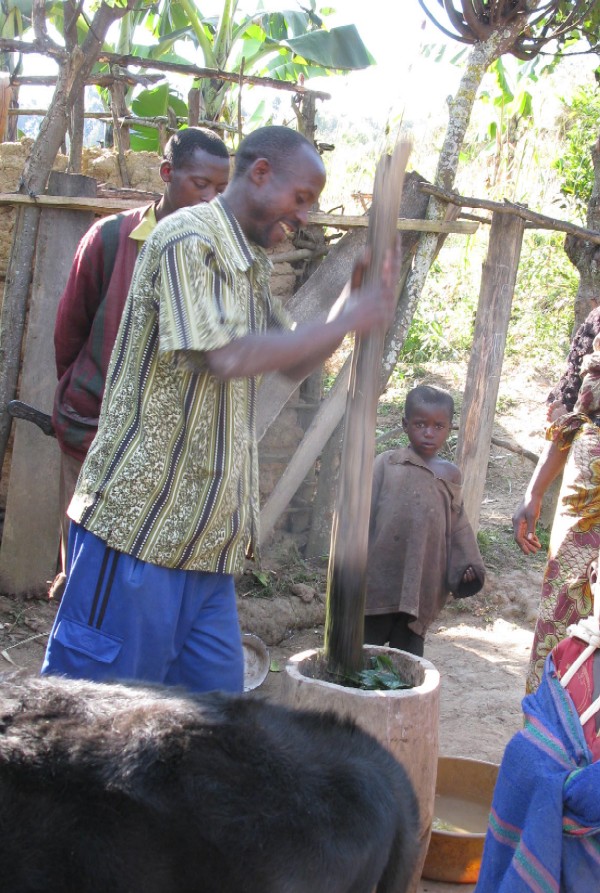
Then he mixes water and salt.
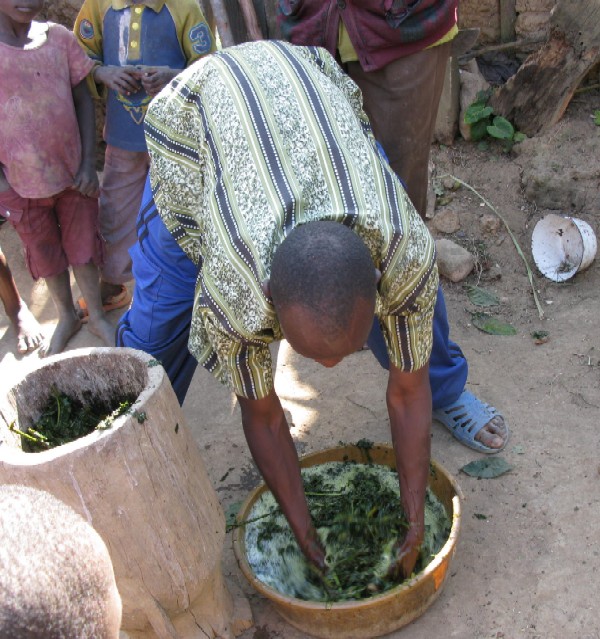
The cow and her calf enjoy both the water and the mash.
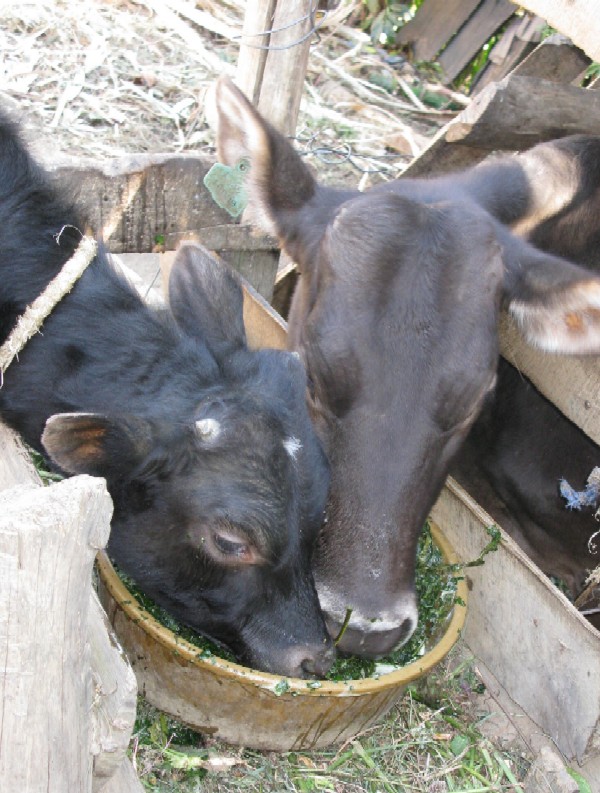
Only men milk cows. When we spoke with women who had lost their husbands, they told us a neighbor would come over and milk for them. Here, however, is a young woman milking a cow. She has the cow in a crush and is using hobbles. This is very good practice. Many farmers milk right in the stall.

Farmers also wanted us to see their other animals Here is Valerie from the Gahira Sector Food Security Program proudly showing off a rabbit. Num!
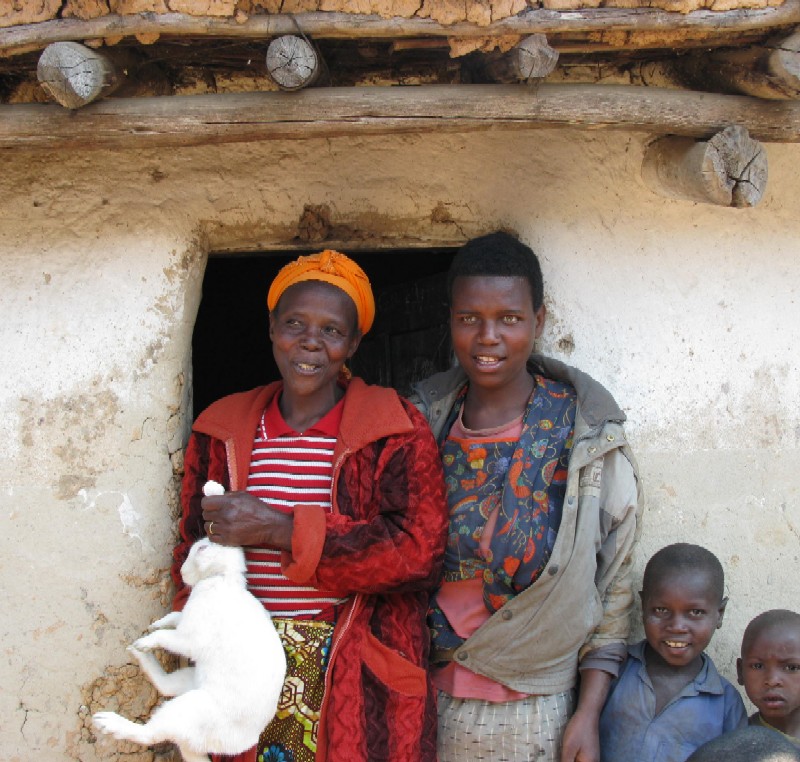
There're some goats along the road. Because goats were starting to take over the country, the government ruled that they must be tied up at all times. Sometimes this is interpreted quite loosely, as is the case of these kids sitting in the grass while their mother was off grazing.
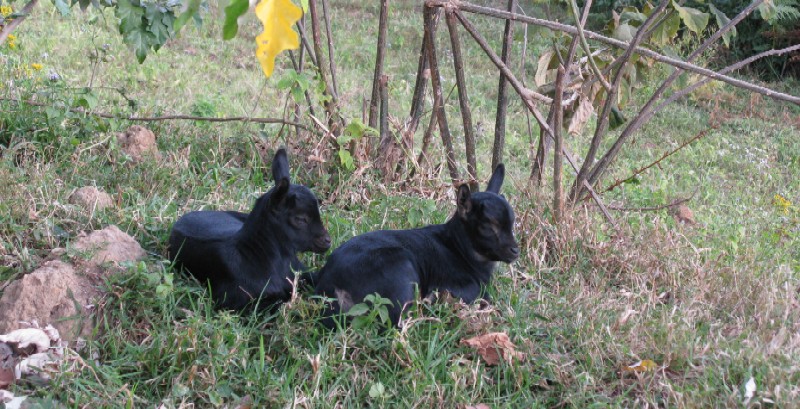
Some people also had dogs. Some were guard dogs and some were just there. Here are Fousten's dogs. He sheepishly admitted that they were simply pets.

Here is a cat at Felista's house.
